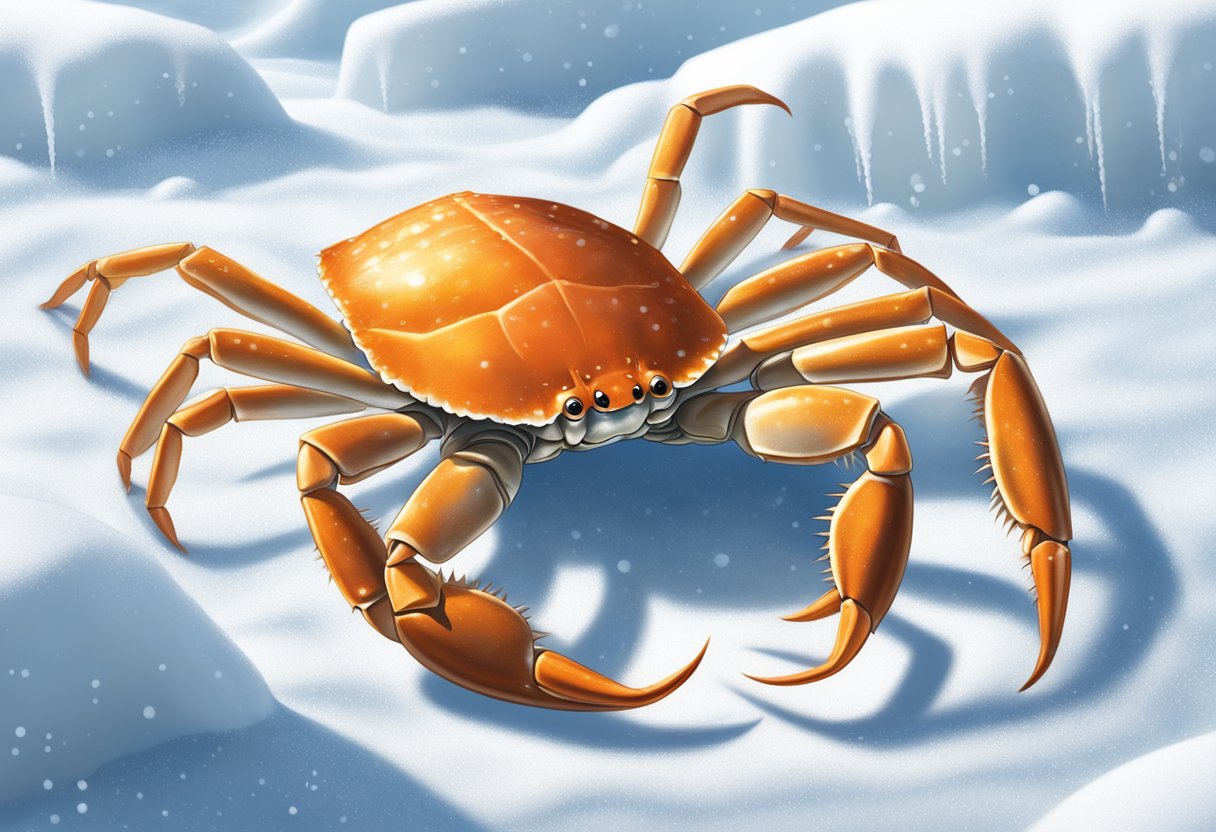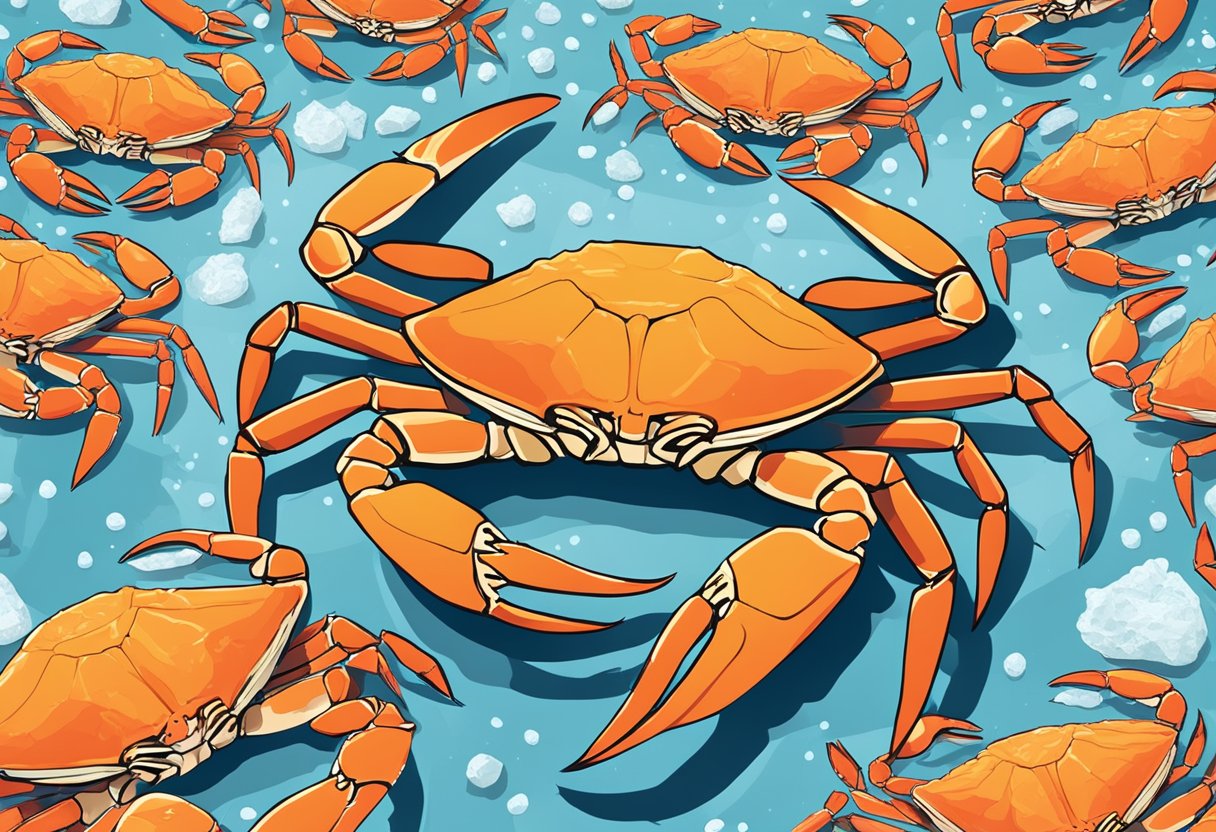Snow crab is a type of crustacean that is known for its sweet and succulent meat. These crabs are found in the cold waters of the North Pacific and the Northwest Atlantic, and are a popular seafood delicacy around the world. If you're a seafood lover, you've probably heard of snow crab before, but may not know much about this fascinating creature.
Snow crabs have a unique appearance, with a spiny shell and long legs that are covered in sharp spikes. They are a type of Chionoecetes crab, which means "snow inhabitant" in Greek, and are also known as queen crabs. These crabs are highly sought after for their meat, which is delicate and slightly sweet, with a slightly salty taste. In this article, we'll take a closer look at snow crab, including its biology and characteristics, fishing and sustainability, and some frequently asked questions.
Key Takeaways
- Snow crab is a type of crustacean that is known for its sweet and succulent meat.
- These crabs are found in the cold waters of the North Pacific and the Northwest Atlantic.
- Snow crabs have a unique appearance, with a spiny shell and long legs that are covered in sharp spikes.
Biology and Characteristics

Physical Description
Snow crabs, also known as Chionoecetes opilio, are a type of crab that are found in the cold waters of the North Pacific, Atlantic Ocean, and the Sea of Japan. They are iridescent and have a range of colours from brown to light red on top and from yellow to white on the bottom. They have bright white sides on their feet. They have five pairs of legs, with the front pair being modified into claws. The carapace, or shell, of the snow crab is round and measures around 10-20 cm in width.
Life Cycle and Reproduction
Snow crabs have a complex life cycle that involves several molting stages. After hatching from eggs that are carried by females, the larvae drift with plankton for around 2-3 months before settling to the benthic shelf. Males reach sexual maturity at around 2-3 years, while females take longer, around 3-4 years. During the mating season, males find females and fertilize their eggs. Females can lay up to 100,000 eggs at a time, which they carry on their abdomen until they hatch.
Habitat and Distribution
Snow crabs are benthic animals that are found at a wide range of depths, from 13 to 2187 meters, with the majority of individuals found no deeper than 110 meters. They are scavengers that feed on a variety of prey, including bivalves, polychaetes, foraminiferans, annelid worms, and mollusks. They are also preyed upon by various invertebrates and predators such as fish and sea otters. Snow crabs are native to the Northwest Atlantic, North Pacific, and the Sea of Japan. They are also found in the Barents Sea and along the west coast of Greenland. The crab lives in areas with bottom temperatures of between -1 - 4 ° C.
Fishing and Sustainability

Fishing Practices
Snow crab fishing is a popular commercial fishing industry in Alaska, Canada, Japan, Siberia, Korea, and the Gulf of St. Lawrence. The fishing season for snow crab varies depending on the location, but it typically starts in January and lasts until June. During the fishing season, commercial fishing vessels use vessel monitoring systems and have observers on board to ensure that they are following sustainable fishing practices.
Conservation Efforts
Conservation efforts are in place to ensure that the snow crab population remains sustainable. The Alaska Department of Fish and Game and NOAA Fisheries have set regulations on commercial landings to prevent overfishing and to protect the population. In 2022, the Alaska Board of Fisheries and North Pacific Fishery Management Council closed the fishery for commercial fishing due to the population falling below the regulatory threshold.
Culinary Uses
Snow crab meat is a popular ingredient in many recipes and is often served on special occasions. The meat is sweet and delicate, making it perfect for dishes such as crab cakes, crab bisque, and crab salads. Snow crab is often served with melted butter, which enhances its flavour.
In conclusion, sustainable fishing practices and conservation efforts are essential to maintain the snow crab population. By following these practices, we can ensure that the snow crab population remains healthy and that we can continue to enjoy this delicious seafood for years to come.
Frequently Asked Questions

What's the difference between snow crab and king crab?
Snow crab and king crab are two different species of crab. Snow crab is smaller than king crab, and it has a sweeter, brinier taste. The leg meat of snow crab has a fibrous texture, while king crab has a firmer texture similar to lobster. Snow crab is also less expensive than king crab.
How much does snow crab typically cost?
The price of snow crab can vary depending on the season and location. Generally, it costs less than king crab. You can expect to pay around £20-£30 per pound for snow crab legs.
Can you recommend some popular snow crab recipes?
There are many delicious ways to prepare snow crab. One popular recipe is to boil the crab legs in salted water for 4-5 minutes and serve with melted butter and lemon wedges. Another option is to bake the crab legs with a mixture of melted butter, garlic, lemon juice, and cajun seasoning. You can also try making snow crab cakes or adding snow crab to pasta dishes.
What are the best places to enjoy snow crab?
Snow crab is a popular seafood dish in many coastal areas. Some of the best places to enjoy snow crab include seafood restaurants, crab shacks, and fish markets. You can also buy snow crab legs online and have them shipped to your home.
What's the scientific name for snow crab?
The scientific name for snow crab is Chionoecetes opilio.
Why do they call it snow crab anyway?
Snow crab gets its name from the cold, snowy waters where it is typically found. It is commonly found in the Bering Sea and the Gulf of Alaska.

